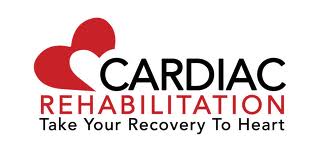, director of cardiology at Johns Hopkins Hospital, talks about the difference between sudden cardiac arrest and a heart attack and what those at risk can do.
Question: What is sudden cardiac arrest?
Answer: Sudden cardiac arrest refers to collapse and loss of consciousness due to a dramatic fall in blood pressure. This is often but not always the result of a life-threatening arrhythmia or an abnormality of the normal rhythmic activity of the heart. An excessively fast or slow heart rate can cause a profound drop in the blood pressure and sudden cardiac arrest. [It] is not a heart attack or myocardial infarction, which refers to a critical blockage in a blood vessel that supplies blood, oxygen and nutrients to the heart muscle. A blockage in a blood vessel can cause part of the heart muscle to die and be replaced by scar.
Q: How common is it, and who is at risk?
A: The risk factors for sudden cardiac arrest include the presence of heart disease, a family history and many of the factors that increase the risk for a heart attack, such as smoking, obesity, physical inactivity, high blood pressure, high cholesterol, high blood sugar or diabetes, and a poor diet. If someone has heart disease, particularly with weakness of the heart muscle, they may be at particularly high risk for sudden cardiac arrest and may benefit from implantation of an Implantable Cardioverter Defibrillator. [The defibrillators] may also benefit patients with a family history of sudden cardiac arrest and/or a genetic tendency to arrhythmias.
Q: How can you prevent sudden cardiac arrest?
A: In some cases, sudden cardiac arrest can be brought on by exertion, but this is not always the case, as sudden cardiac arrest often occurs when one is at rest. Physical activity is generally good for all of us. Those with known heart disease should consult their health care provider about the details of their own physical activity, but generally, even patients with heart disease should try to remain active. It’s wise to avoid extreme activity, particularly in harsh environmental conditions, such as heat or cold. For anyone who exercises, symptoms such as profound dizziness or lightheadedness, chest pain, shortness of breath, extreme fatigue and/or palpitations should prompt cessation of exercise and depending upon the severity of the symptoms and get prompt medical attention.
Q: How is sudden cardiac arrest different from a heart attack?
A: Heart attacks are caused by blockage of the arteries, which supply oxygen and nutrients. These most often are accompanied by chest pain and/or shortness of breath. Sudden cardiac arrest can be a complication of a heart attack, but it can occur without a heart attack. The treatment of a heart attack is to limit the damage to the heart by promptly opening up the involved blood vessel by a procedure known as angioplasty and by placing a stent to keep that vessel open. The treatment of sudden cardiac arrest is restoration of the heart’s normal rate of contraction and rhythm, and this typically involves a shock to the chest that’s known as cardioversion or defibrillation.
Q: How quickly do you need to be treated to survive?
A: The most common arrhythmias or irregularities of the heart that cause sudden cardiac arrest are rapid heart rhythms from the heart’s lower chamber. These are called ventricular tachycardia and ventricular fibrillation. If these arrhythmias are not promptly corrected by a shock to the chest, the individual will die. In the case of ventricular fibrillation, this may take only minutes. One can buy time by performing effective CPR. Just chest compressions, or so-called “hands-only” CPR, can be lifesaving.
Adapted from The Baltimore Sun
Related articles
- James Gandolfini dead at 51: Cardiac arrest explained (cbsnews.com)
- Heart Attack or Sudden Cardiac Arrest: How Are They Different? (northalabamaaha.wordpress.com)
- Learning CPR Could Help You Save A Life (nuskoolurbannurse.wordpress.com)







